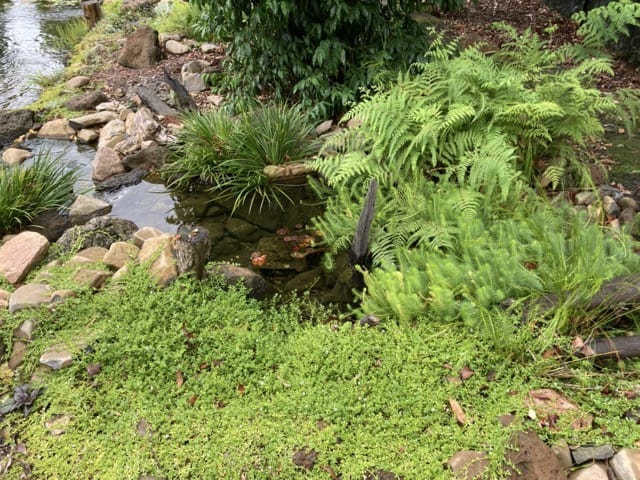Are you tired of expensive pond maintenance products that promise clear water but fail to deliver?
If you want an effective and low-cost solution for maintaining a clean and clear pond, look no further than the bog filter. In this article, I’ll explore the wonders of bog filters and how they utilise natural processes to keep your pond pristine without breaking the bank.
Understanding Bog Filters
Bog filters are ingenious systems that harness the power of naturally occurring bacteria and microbes to cleanse pond water. Unlike traditional filters that rely on costly additives and equipment, bog filters work symbiotically with plants, rocks, and gravel to remove excess nutrients and impurities from the water.
The below video will help explain exactly what a bog filter is and why it’s so darn effective.
Building a Bog Filter
The construction of a bog filter is relatively simple and cost-effective. The filter design involves water slowly moving through rocks, pebbles, or other media, resembling the natural flow of water in a bog or wetland.
As the water passes through the filter, bacteria and microorganisms living on the media break down organic matter, ensuring clean and clear water.
Here’s a video showing how I built a simple bog filter in an old olive barrel.
The Science Behind the Magic
Understanding the nitrogen cycle in ponds and aquariums can help you grasp the fundamental principles behind how bog filters operate. By providing a suitable environment for beneficial bacteria to thrive, bog filters establish a balanced ecosystem that naturally keeps your pond water clear and healthy.
A bog filter is replicating the way that mother nature has filtered water for millennia. Below I talk about the sizing, flow rates and maintaining the filter.
Here’s a video provides a great overview on how to design a bog filter and below, I’ve also included various other videos that will show specific bog filter builds. They are also well worth checking out.
Size does matter
Determining the appropriate size of your bog filter is crucial for its efficiency.
The recommended sizing formula is to make the bog filter 10% of the pond size if you have a few fish or up to 30% of the pond size if you have more fish or want a larger pond, potentially one you could swim in.
Oversizing the bog filter is advisable, as it accounts for future fish growth and increased nutrient processing requirements.
I like to size my bog filters based on the ponds volume. For example, if the pond was 4000 litres ( roughly 1000 US gallons) a 10% bog filter would be capable of holding 400 litres (roughly 100 US gallons).
Flow Rate Considerations
To mimic the slow flow found in natural wetlands, it’s important to set the right flow rate for your bog filter. Remember we want a reasonably slow flow rate.
A general rule I like to use is to calculate the flow rate by multiplying the size of the bog filter by six.
This determines the amount of water (in liters or gallons) that you want to move through the filter per hour.
For example, if the bog is 400 litres (roughly 100 US gallons), I would use a 2400 litre (roughly 600 US gallons) per hour pump.
Bog Filter Design and Maintenance
Bog filters can be made out of various materials, including food-grade and UV-stabilized plastics, or EPDM rubber pond liners. The components you ultimately use will be determined by the size of the filter.
In one of the videos I linked I showed how I made a bog using an old olive barrel. Below are some other videos on different bog designs I’ve used.
To prevent clogging and ensure proper water movement, it’s best practice to design the filter with a bottom-to-top water flow. Consider using a false bottom or different grades of rocks to evenly disperse the water.
Preventing the Bog from Emptying
During power outages, the water in a bog filter can siphon back into the pond, leading to the loss of water and potentially polluting the water (due to the waste in the bog filter retuning to the pond).
To prevent the bog from emptying during such occurrences, I add a breather pipe. This video will show how I do that.
Even adding a small hole to suck in air if the pump shuts off will work.
With the power of bog filters, you can maintain a stunning pond with clear water and minimal maintenance.
By leveraging the natural processes of beneficial bacteria, microbes, and plants, bog filters offer a cost-effective and eco-friendly solution to pond owners.
Embrace the magic of bog filters and watch as your pond thrives with life and beauty, all while saving money and effort in the process. I hope this was helpful.

